Learning About Motorcycle Insurance: Important Things You Should Know
You have probably heard of the word insurance before – from media, family members, friends, or insurance agents trying to get you to sign up with them. Insurance is a fairly common term, but not everyone has a good grasp of what it means.
Insurance refers to a financial product sold by companies to protect a person (or his/her property) from possible loss, theft, or damage due to a particular situation, which is usually in the form of an accident or natural calamity.
There are different types of insurance, and it’s essential to understand how each kind differs from one another to make better decisions regarding your finances and property. Here are some insurance policies that you need to know, especially if you own a motorcycle:
Optional Equipment Coverage
Optional equipment coverage insures your motorcycle accessories such as stereos, aftermarket wheels, suspension upgrades, engine accessories, all safety gear, and more. The covered amount varies depending on the insurance company, with most firms only offering up to $2,500. If you’re looking for broader coverage for optional motorcycle equipment, you can contact us at MaxRPM Insurance. We offer up to $30,000 on eligible motorcycles, allowing our clients to ride more comfortably knowing that their asset is fully protected.Liability Insurance
Liability insurance covers the other person when an accident occurs, causing loss or damage to the other party, and it is determined to be your fault. By securing liability insurance, you gain the option to choose what limits you would like to have as long as they meet the state requirements. However, it would help if you kept in mind that any damages above your limits will be considered your sole responsibility. You would typically see three numbers on your liability insurance policy that you need to know about. For example, if you see 250/500/200 on your insurance deal, it means that the maximum amount your insurer will cover per person for bodily injury is set at $250,000. The second number is the maximum amount that your insurer will pay for the total of all physical injuries involved in an at-fault accident, or $500,000. Finally, the last number refers to property damage coverage. This number is the maximum amount your insurer will pay for another’s property, which stands at $200,000 worth of property damage in this example.Uninsured or Underinsured Motorist Insurance
It’s important to have uninsured or underinsured coverage if you figure in an accident where you are not at fault, and the at-fault driver has no or not enough insurance to cover the damages. These damages could include medical bills, lost wages, funeral expenses, and pain and suffering compensation. Usually, your uninsured or underinsured coverage mirrors your liability coverages. However, you can always talk to a licensed insurance agent to have it adjusted to fit your needs better.Medical Payment Coverage
Medical payment coverage is used to pay for medical expenses such as doctor’s visits, surgery, x-rays, ambulance fees, and more. This coverage is available to you and your passengers, whether you are at fault or not, a driver, passenger, or even a pedestrian. Even if you have medical insurance, this coverage can help ease your finances by paying for deductibles and eliminating gaps in the covered amount.Collision Insurance
Collision insurance will pay to repair or replace your vehicle whether you are at fault or not. This coverage includes colliding with another vehicle or any other object. Collision coverage is usually optional but may be required if you leased or financed your vehicle. You can choose your deductible amount in collision insurance, which is commonly set at $500. This means that if you were to get into an accident resulting in damages worth $4500, you would only need to pay $500, and your insurance company would pay the remaining balance. Typically, the lower your deductible is, the higher your premium will be with this coverage.Comprehensive Coverage
Comprehensive insurance is used to finance repairs or replacements for your vehicle for anything other than a collision. This includes theft, vandalism, fire, falling objects, animal damage, and more. Like auto collision insurance, you can also set a deductible amount when setting up your auto comprehensive coverage.Transportation Expense Coverage
Transportation expense coverage will cover your motorcycle and trailer in the event of damage or loss from a collision, rollover, vandalism, and most human-made and natural losses.Trip Interruption Insurance
Trip interruption insurance is an optional coverage policy that will cover up to $1500 for food and/or hotel expenses if you were to be in an accident while on the road or if your motorcycle was to become disabled while away from home.A Final Word on Understanding Motorcycle Insurance
It’s essential to get motorcycle insurance to protect yourself, your family, and your vehicle if an unforeseen tragedy occurs. By signing up for the necessary insurance policies, you can lessen stress during difficult times while still enjoying financial security. Several insurance firms are out there, and it’s essential to sign only with someone you can trust. If you need assistance in determining and understanding your motorcycle insurance policies, you can always reach out to MaxRPM Insurance. With a team of licensed and adequately trained agents, you can trust MaxRPM Insurance to help you secure the best insurance policy that suits your and your family’s needs.Let’s talk insurance
Hit the button before you hit the road!
Give us a call or text at (844) 784-7761
Or leave a message if you have a question or need claims assistance.
